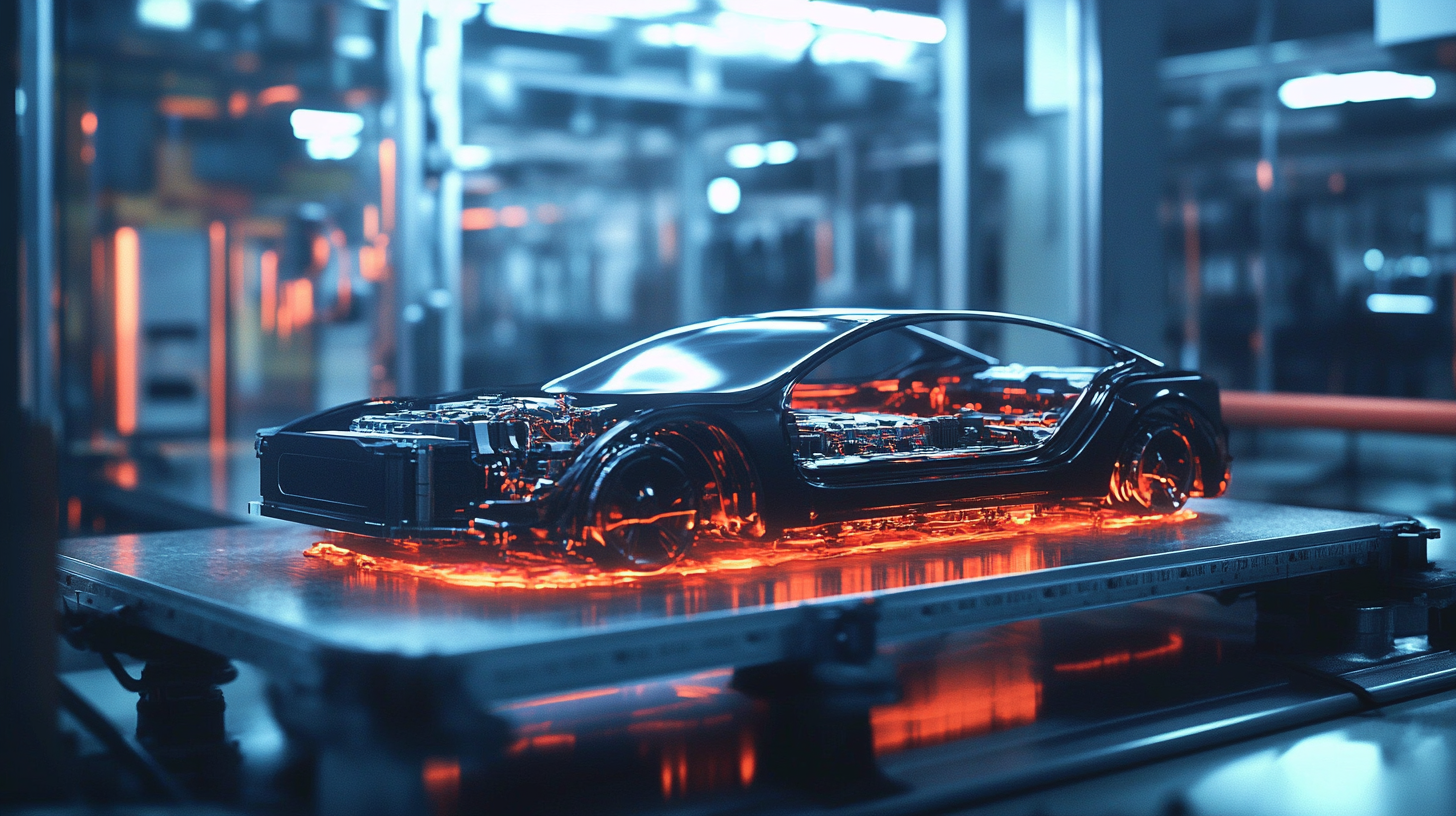The Evolution of Car Battery Technology in a Global Market
The automotive industry is undergoing a significant transformation, and at the heart of this evolution lies the technology behind car batteries. As the demand for electric vehicles continues to surge globally, innovations in car battery technology are not just enhancing vehicle performance but also redefining energy sustainability. This blog aims to explore the journey of car battery technology, highlighting how advancements in materials, design, and manufacturing processes are reshaping the landscape of the global automotive market.
In recent years, the urgency to combat climate change and reduce carbon emissions has intensified the focus on cleaner energy solutions. Car batteries, being the lifeblood of electric vehicles, are at the forefront of this movement. As we delve into the historical development, current trends, and future potential of car battery technology, we'll also discuss the challenges faced by manufacturers and the implications of these advancements for consumers and the environment alike. Join us as we navigate through the intricate evolution of car battery technology and its pivotal role in the quest for a sustainable automotive future.

The History of Car Battery Technology: From Lead-Acid to Lithium-Ion
The evolution of car battery technology has seen remarkable advancements over the years, beginning with the traditional lead-acid batteries. Introduced in the late 19th century, lead-acid batteries became the cornerstone of the automotive industry due to their reliability and affordability. Their design, based on lead and sulfuric acid, offered a reasonable energy density and the capability to provide a quick burst of power, essential for starting internal combustion engines. However, the weight and limited cycle life of lead-acid batteries eventually highlighted the need for more efficient alternatives. As environmental concerns grew and technology progressed, lithium-ion batteries emerged as a game-changer in the automotive sector. With significantly higher energy densities and lower weights, lithium-ion batteries proved to be ideal for electric vehicles (EVs). Their ability to sustain longer ranges between charges set the stage for a broader acceptance of electric mobility. Furthermore, advancements in battery management systems and charging technologies have drastically improved the performance and lifespan of lithium-ion batteries, making them the preferred choice for modern vehicles. Today, the competition among various battery technologies continues to drive innovation. Research is ongoing in developing solid-state batteries, which promise enhanced safety and even greater efficiency. As the automotive market shifts towards sustainability, the focus remains on not just improving battery performance but also ensuring responsible sourcing of materials, highlighting the importance of a comprehensive approach to the evolution of car battery technology.

Key Innovations in Battery Chemistry and Their Impact on Performance
The landscape of battery technology is undergoing a significant transformation, driven by a series of key innovations in battery chemistry that are redefining performance metrics. In recent developments, researchers have begun focusing on the aging effects of batteries—issues such as thermal expansion and the degradation that comes from repeated charging cycles. The pursuit of creating batteries that can effectively "turn back time," or rejuvenate their capacity, reflects a deeper understanding of these challenges.
One of the most promising advancements comes from the world of solid-state batteries, which have garnered attention for their high energy densities. Mercedes-Benz recently initiated road tests for their new solid-state batteries, achieving an impressive energy density of 450 Wh/kg. This innovation is viewed as a major step toward mass production and offers potential improvements in terms of safety and longevity compared to traditional lithium-ion batteries. As solid-state technology matures, it may well become the cornerstone of future electric vehicle power systems.
Meanwhile, the sodium-ion battery is emerging as a cost-effective alternative, fueled by its abundant raw materials and substantial application potential in low-speed electric vehicles and large-scale energy storage. Research teams are making significant strides in developing fast-charging materials for sodium-ion batteries, enhancing their practicality for everyday use. These innovations not only promise better performance but also aim to bring energy storage solutions to a wider audience, ensuring that the evolution of battery technology continues to match the growing demands of the global market.

The Role of Environmental Regulations in Shaping Battery Development
The automotive industry is undergoing a significant transformation, driven largely by environmental regulations that aim to reduce carbon emissions and promote sustainable practices. These regulations not only influence the design and manufacturing of vehicles but also play a critical role in shaping the development of car battery technology. As governments worldwide enforce stricter emissions standards, auto manufacturers are compelled to innovate and enhance the efficiency of battery systems.
Recent reports, such as the 2024 Environmental, Social, and Governance (ESG) report from Tongwei Co., highlight the growing commitment of companies to align their strategies with sustainability goals. As a result, advancements in battery technology are becoming increasingly important. Innovations such as solid-state batteries, which promise greater energy density and faster charging times, are gaining traction, driven by the need to meet regulatory requirements and consumer demand for greener alternatives. Furthermore, companies are exploring battery recycling solutions to minimize waste and environmental impact, reflecting a holistic approach to sustainable development.
The Deloitte 2023 Automotive Industry Trends report also emphasizes the shift towards electric vehicles (EVs) and the necessity for improved battery technologies. As automakers invest heavily in research and development, the integration of innovative materials and cleaner production methods is crucial. The interplay between regulatory frameworks and technological advancement is pushing the boundaries of what automotive batteries can achieve, paving the way for a cleaner, more efficient future in the global market.

Emerging Trends: Solid-State Batteries and Their Potential Advantages
The evolution of battery technology is entering an exciting phase, particularly with the emergence of solid-state batteries. Unlike traditional lithium-ion batteries, solid-state batteries utilize solid electrolytes, which can significantly enhance energy density, safety, and longevity. Experts predict that by 2025, these innovative power sources may disrupt the current lithium-ion battery market, paving the way for more efficient electric vehicles (EVs) and other applications.
As the demand for long-range EVs increases, the solid-state battery market is projected to grow substantially, with estimates of an increase of USD 554.8 million from 2024 to 2028. This surge is propelled not only by advancements in battery technology but also by the integration of artificial intelligence in production processes. However, despite the promising advantages such as improved energy capacity and reduced risk of fire, the path to widespread adoption is fraught with challenges. Manufacturers must overcome technical hurdles, including scaling production and ensuring cost-effectiveness before solid-state batteries can become mainstream.
Ongoing research and development in this arena suggest that while we are on the brink of an energy revolution, the transition to solid-state technology will require significant investment and innovation. With continued focus on overcoming existing limitations, solid-state batteries could redefine the future of energy storage, ultimately enhancing the performance of electric vehicles and several other technologies.
Global Market Dynamics: Key Players and Regional Trends in Battery Production
The global battery market is experiencing a remarkable transformation, driven by the increasing demand for energy storage solutions and advancements in technology. The Lithium-Sulfur battery market, for instance, is projected to grow significantly, reaching an estimated value of USD 1,654.5 million by 2033, with a staggering CAGR of 38.2%. This surge is fueled by the search for more efficient energy sources and the growing adoption of electric vehicles (EVs), which require robust battery systems to ensure longevity and performance.
In addition, the Battery as a Service (BaaS) market is expected to reach USD 9.20 billion by 2034, reflecting a CAGR of 20.34%. This innovative business model allows customers to access battery power without the capital costs of ownership, making it an attractive option for businesses and consumers alike. The shift towards sustainable energy solutions is creating a dynamic market landscape, paving the way for companies focused on developing and optimizing battery technology.
The Battery Management System (BMS) market is also gaining traction, as efficient management of battery systems is crucial for enhancing performance and safety. As battery technologies evolve, the demand for advanced BMS solutions will likely intensify. Furthermore, the marine battery segment is set to thrive, with significant opportunities for growth in energy-efficient maritime solutions. Solid-state batteries are anticipated to capture a considerable market share as they offer improved safety and energy density, with forecasts of reaching a USD 9 billion market size by 2035. Such trends underscore the robust and diverse landscape of battery production and utilization across various industries globally.

